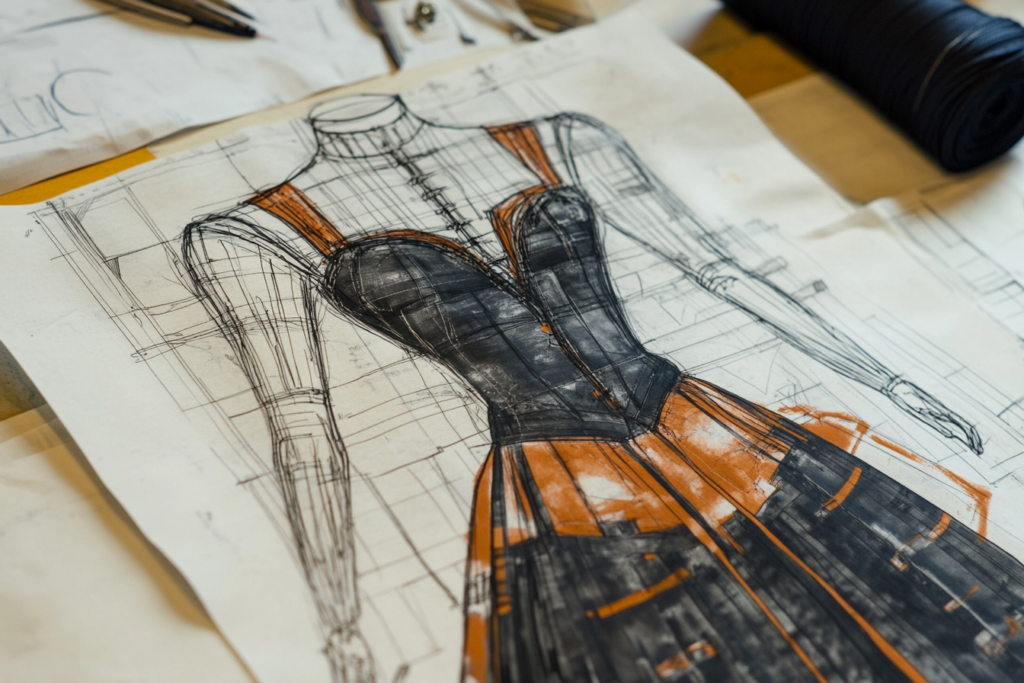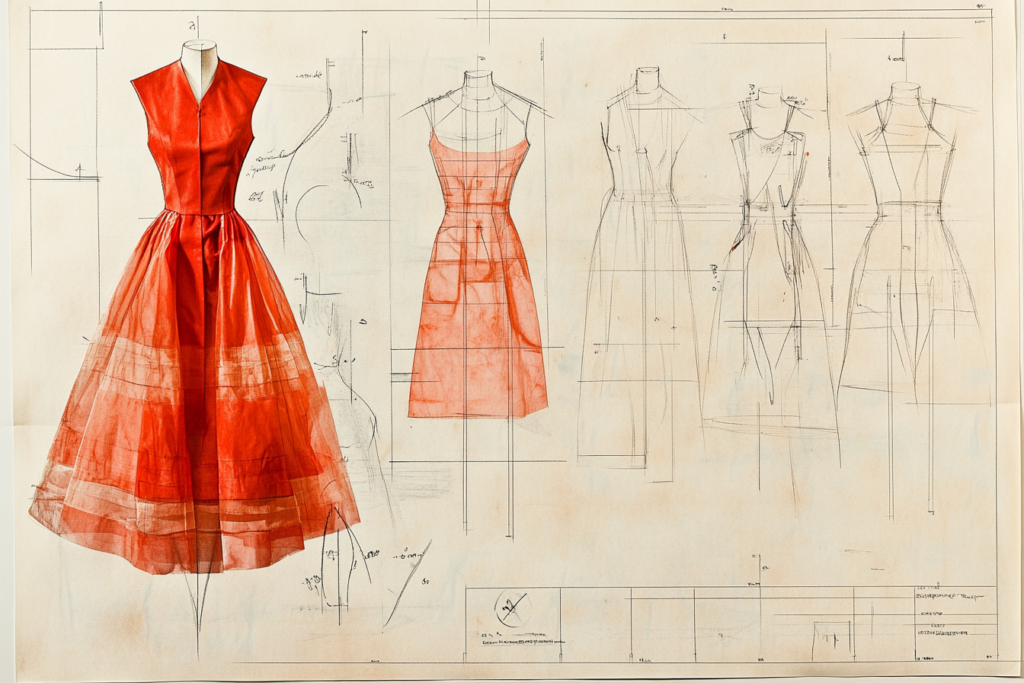Flat: A Professional Two-Dimensional Plan for Garment Design
Meta Description: A flat is a two-dimensional, scaled plan used in garment design, detailing sewing, structural elements, and construction information. Learn how flats are used in fashion.
Introduction: What is a Flat in Garment Design?
In the fashion and garment industry, a flat refers to a two-dimensional technical drawing or blueprint of a garment. It is typically drawn to scale and includes essential details like construction, seams, stitching, measurements, and garment features. Flats are commonly used by designers, pattern makers, and manufacturers to communicate the specific design and structure of a garment before it’s produced.
A flat provides a professional, precise representation of a design, offering both aesthetic and functional information. Unlike a fashion sketch, which focuses on the creative and artistic aspects of the garment, a flat is more technical, aimed at ensuring accuracy in production.


The Purpose of a Flat in Garment Design
- Clear Communication:
- Flats allow designers to communicate their vision to pattern makers, manufacturers, and other stakeholders clearly and effectively. This reduces the chance for misunderstandings, ensuring the final garment closely matches the designer’s original concept.
- Construction Details:
- Flats provide detailed information about how the garment should be constructed. They include seam placements, stitching types, and finishing details. This is essential for the production team to understand how to assemble the garment properly.
- Sizing and Fit:
- Flats can also indicate measurements, proportions, and the intended fit of the garment. These drawings help ensure that the garment fits properly and is constructed according to the designer’s specifications.
- Standardized Documentation:
- Flats serve as a standardized document in the design process, ensuring consistency and reducing errors during production. They provide the necessary information for every stage of garment creation, from pattern making to final assembly.
Key Components of a Flat
- Scale:
- Flats are typically drawn to scale, meaning the dimensions of the garment are proportionate to the actual size. This allows manufacturers to visualize how the garment will look and fit at various sizes.
- Front and Back Views:
- A flat will typically include both the front and back views of the garment. Each view will showcase key details, such as pockets, zippers, button placements, and other design elements. These views are crucial for understanding the overall structure of the garment.
- Sewing Instructions:
- Flats often include sewing and construction instructions, indicating how different parts of the garment should be sewn together. These instructions can specify the types of stitches to use, seam allowances, and other important construction details.
- Details and Features:
- A flat will highlight important garment features such as pockets, zippers, collars, cuffs, or any other distinguishing elements. These details are drawn with specific notations, helping the production team understand how these components should be incorporated.
- Material Specifications:
- Some flats also include material specifications, indicating the fabric or textiles used in the garment. While not always included, this can be particularly useful when creating technical packages for production.
Types of Flats in Garment Design
- Technical Flats:
- These are the most common type of flat and are used for technical purposes. They focus on the construction and fit of the garment, showcasing detailed information about the garment’s structure. These flats often include precise measurements and notes for the production team.
- Creative Flats:
- These flats are more focused on aesthetic details and may include artistic touches such as color palettes, patterns, and texture representations. While still functional, creative flats are used to convey the designer’s artistic vision more clearly.
- Production Flats:
- Production flats are finalized technical drawings that serve as the primary guide during the manufacturing process. They provide comprehensive details on how the garment should be constructed, including fabric types, trims, and finishes.
How Flats Are Used in the Garment Production Process
- Design Development:
- Flats are essential during the early stages of design. They allow the designer to visualize the garment in its finished form and make necessary adjustments to the construction before the garment goes into production.
- Pattern Making:
- Pattern makers use the flat to create the garment’s pattern pieces, ensuring that all components are cut accurately. The flat provides essential information about how the pieces fit together and what measurements to use.
- Manufacturing:
- Once the flat is finalized, it is sent to the manufacturer. The production team uses it to guide the actual construction of the garment. Flats help ensure that the garment is assembled correctly and matches the designer’s specifications.
- Quality Control:
- Flats are also used in quality control to ensure that the garment produced matches the initial design. If any discrepancies arise during manufacturing, the flat serves as a reference point for making corrections.
Why Flats Are Crucial in Fashion Design
- Accuracy: Flats provide detailed, accurate representations of a garment, reducing errors during production and ensuring that the final product matches the designer’s vision.
- Efficiency: Using flats helps streamline the production process, as all stakeholders have clear instructions on the garment’s design and construction.
- Cost-Effectiveness: By preventing errors and miscommunication, flats help reduce costly production mistakes, making the overall process more cost-effective.
- Professionalism: Flats give the designer a professional tool for presenting their designs. Whether for internal development or external partnerships, flats help designers communicate their ideas with precision.
Conclusion: Flats as a Key Element of Garment Design
Flats are an essential tool in garment design, serving as the bridge between creativity and production. They allow designers to communicate technical details clearly and ensure that garments are constructed as intended. By providing a two-dimensional, scaled blueprint of the garment, flats help minimize errors, improve accuracy, and contribute to the overall efficiency of the design and production process.
For any designer, pattern maker, or manufacturer, understanding and utilizing flats is crucial to creating high-quality, well-constructed garments that meet the designer’s specifications.



